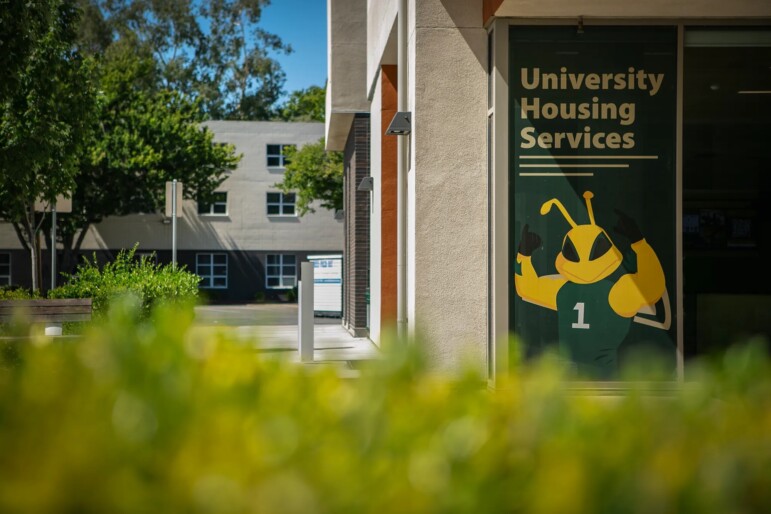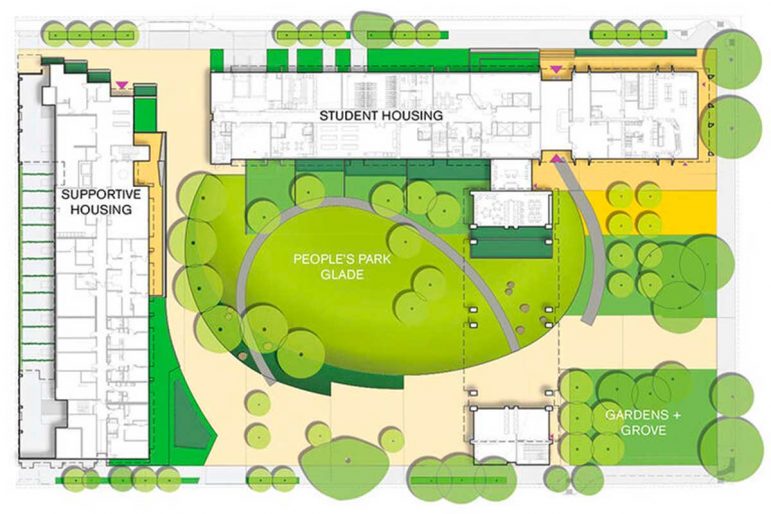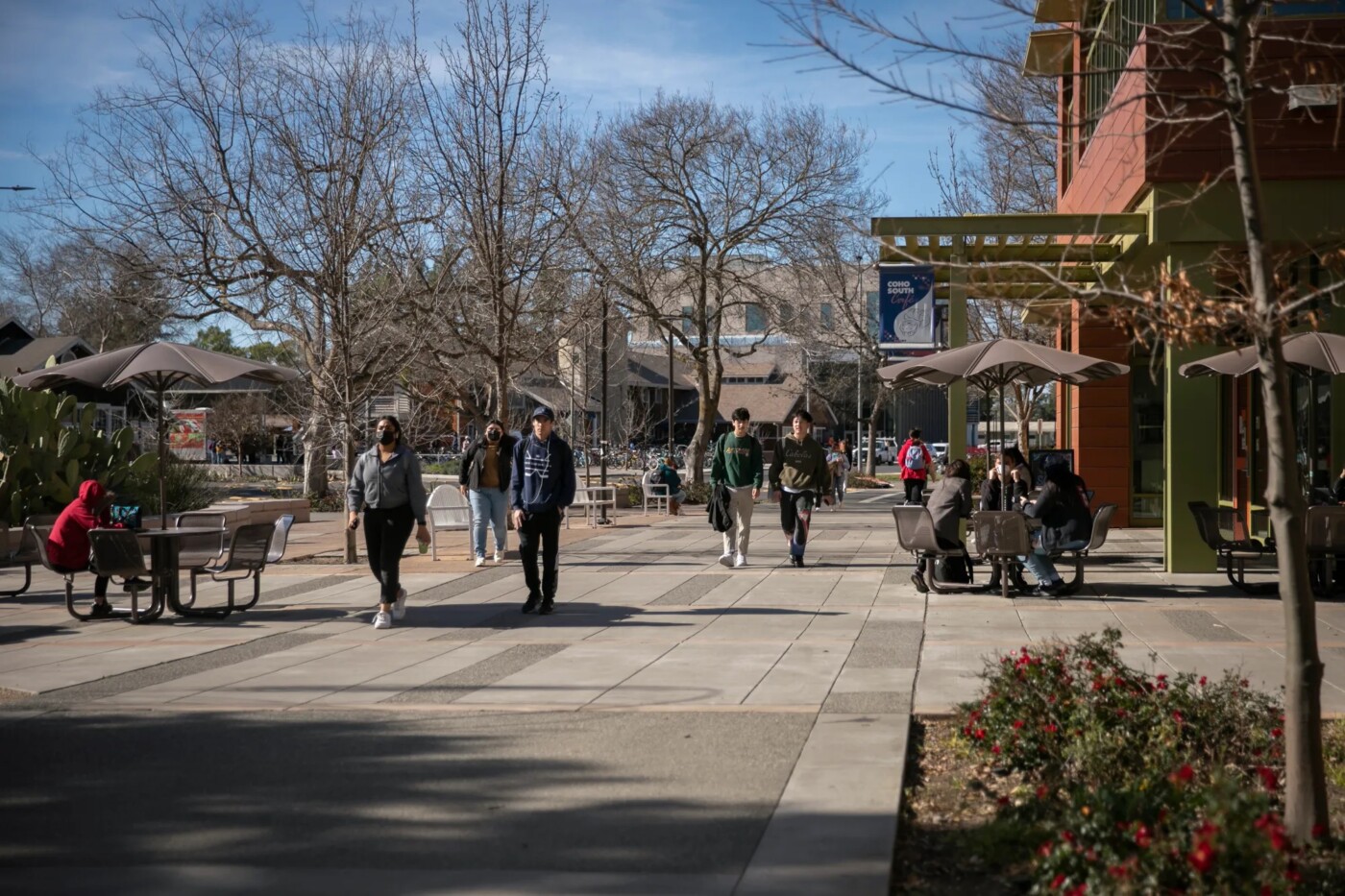Campus housing: Students can’t get enough of it and California public campuses can’t build dorm rooms fast enough.
And yet, Gov. Gavin Newsom has proposed delaying by a year nearly $1.2 billion in loans and grants that would build housing for thousands of students at affordable rates — money the state promised campuses in last year’s state budget.
Newsom seeks the delay to help balance the state’s projected $22.5 billion budget deficit in 2023-24. But lawmakers who hold huge sway over higher-education finances are adamant that no money is pulled from the state’s recent, unprecedented multi-billion-dollar down payment on affordable student housing.
Adding to the intrigue, the Legislature’s own top policy advisor, the Legislative Analyst’s Office, proposed that the state completely drop its investment in student housing or at least change how the money is spent. One such idea? Renege on a promise to continue sending community colleges grants to build more student housing for next year.
Ultimately the state must have a balanced budget before June 30, but if the last three legislative budget hearings on higher education are any indication, how much — and when — to spend on student housing will be a key point of friction between the Democrat-controlled Legislature and Newsom.
The governor’s plans to delay housing funding is “something that we don’t support and we’re going to be looking at other options,” said Assemblymember Kevin McCarty, a Democrat from Sacramento and chairperson of the Assembly’s budget subcommittee on education, at a Tuesday hearing.
“This is such a priority for the Senate and the Assembly the last couple years and just checks so many boxes: housing crisis, check; college affordability, check; enrollment growth for students, check,” he added.
If Newsom gets his way, the $750 million campus housing grants slated for 2023-24 would drop to $500 million and the remaining $250 million would become available in 2024-25. And rather than spending a combined $1.8 billion on campus no-interest loans in 2034-24 and 2024-25, Newsom proposed zero dollars in 2023-24 and spreading the funds across the subsequent two years.
“Effectively the governor’s budget maintains the overall funding commitment for these two student housing programs,” said Michelle Nguyen of the Department of Finance, an office in the governor’s administration. “But given the budget outlook, the governor’s budget proposes funding delays for these programs.”
That may be bad news for the hundreds of thousands of college students in desperate pursuit of housing — even if these state efforts can only build a fraction of the living quarters survey data say is needed.

Sparing campus-housing funding from cuts is a bipartisan sentiment in the Legislature. It’s important that “we have the funding available and not delayed… in order to build housing necessary to accommodate those students in the universities, especially when the state is requiring a certain level of enrollment for each university,” said Sen. Rosilicie Ochoa Bogh, a Republican from Rancho Cucamonga, at a Senate subcommittee hearing last Thursday.
Thirty campuses remain unfazed and have submitted plans exceeding $2.1 billion to build as many as 12,700 additional dorm beds with low rents. The size of the projects varies, including 1,553 affordable beds at UC Riverside, 517 at San Jose State and 117 at Lassen Community College in northeastern California.
For the University of California, the state grants supplement plans to construct an extra 22,000 beds by 2028.
Included in the state grant mix is housing for UC graduate students — 236 dorm beds at UC Merced, a campus with just nine beds for graduate students at a time when affordable housing was a major rallying cry for students striking late last fall.
All told, the University of California’s six grant proposals pencil out to about $108,000 per affordable bed; Cal State’s three projects would cost $170,000 per bed; and the 21 plans submitted by community colleges — schools with little experience building student housing — would cost $205,000 per bed. (Overall, last year’s approved state-funded dorms were slightly more expensive per bed.)
Even if the Legislature and Newsom agree to pull no dollars from the housing grant in 2023-2024, most of those plans will go unfunded by the program. That’s because last year’s spending roadmap called for pouring $750 million into the grant in 2023-24 — so about a third of the money colleges and universities are seeking.
It’s a case of deja-vu: When the affordable housing grant program took applications from campuses for the first time in 2021, 42 campuses submitted construction bids totaling $2.8 billion — well above the $500 million the state planned to spend.
With the state eyeing a $100 billion budget surplus last year, lawmakers and Newsom nearly tripled last year’s budget for the housing grant program, in part by advancing money from future budgets, ultimately greenlighting the construction of roughly 7,300 affordable residencies for low-income students.
But with a multi-billion-dollar deficit projected across several years, the state spending more to approve a larger number of projects isn’t likely this year. The Legislature and governor’s office will pick projects based on a rubric that takes into account details such as an area’s unmet need and the number of affordable beds new construction will create.
Plus, budgeting is an inexact science. The Cal State system is reporting that its construction costs for the nine dorms it sought to build last year rose by 14% between fall 2021 — when the system submitted their plans — and this January. A CSU senior official told lawmakers Tuesday that its campuses found most of the necessary outside funds, but the system still needs another $12 million in grant funds to pay for the projects approved last year.
UC also saw costs grow but they’re paying for those internally, a university official told lawmakers yesterday. A court ruling stalling UC Berkeley’s housing plans is another headwind for the UC.

Costs rising quickly is another reason some lawmakers don’t want to delay building student housing. It’s likely “that delays will increase costs and lessen the number of beds projects can deliver,” staff for the Assembly’s budget subcommittee on education wrote.
Lawmakers also considered whether the state should fund the no-interest loan program rather than the housing grants for the upcoming year.
An official at the Legislative Analyst’s Office, which floated the idea in a report, said there’s some merit to that because campuses could build more affordable housing with the same amount of money under the loan program. Also, as campuses repay the state, the loan fund is replenished, allowing lawmakers to approve a new generation of campus housing.
But the analyst’s office warned that some campuses that budgeted to have grant dollars may not be able to afford their projects with just a loan at no interest. Also, it’s likely that dorms built with loan money — while still affordable — will have larger rents than grant-funded housing. Typically, campuses issue bonds to build dorms and repay those with interest.
McCarty also suggested that the state should pass on funding the dorm plans that community colleges submitted this year because they “aren’t ready for prime time.” He said the state could supply community colleges the money in 18 months to two years.
A senior official at the California Community Colleges Chancellor’s Office disputed that assertion. “All of these projects are not in an aspirational stage,” said Lizette Navarette, interim deputy chancellor. The plans submitted have “demonstrated need, a viable financial plan, community support and extensive student need.”
Meanwhile, some students don’t want to wait on the state to produce more housing: A coalition of student groups sponsored a bill recently that would encourage more private developers to construct homes for students off-campus. Assemblymember Eduardo Garcia, a Democrat from Coachella, is the author.
“The availability of off-campus housing is just as necessary,” said Zachariah Wooden, a vice president for the Student Senate for California Community Colleges, at a press conference yesterday.
